Green gardening: These plant species will do well when harsh weather hits Palm Beach
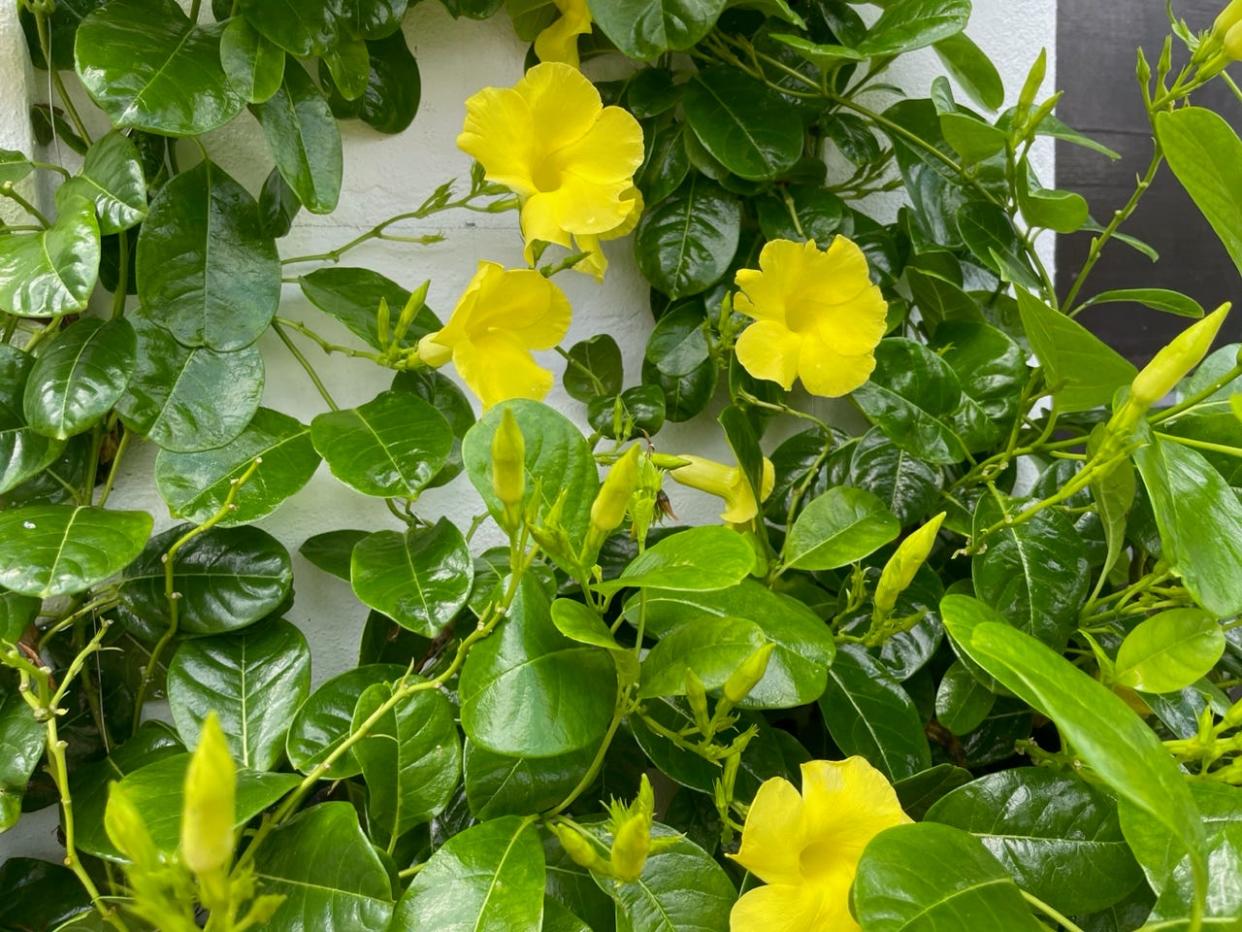
Palm Beach dodged a bullet with Hurricane Ian last week, but still saw some damage.
After perusing several gardens around the island, numerous plants stood out for surviving Ian’s winds and torrential rains here with flying colors. Here are some exceptionally hardy species that will help hurricane-proof your gardens, assuming we don’t get a 10-foot storm surge:
Wild allamanda (Pentalinon luteum) fared famously on the totally exposed south facing wall of my daughter’s garage. The shiny evergreen foliage was still adorned with brilliant yellow trumpet-like flowers right after the storm. You would be hard-pressed to find a more beautiful, floriferous climber than this non-invasive vine.
Tolerant of significant amounts of salt spray and wind, wild allamanda is perfect for an arbor or arch over an entryway. Skippers and other butterflies climb down the flowers’ tubular openings in search of nectar. The mounding form, Allamanda cathartica, can be seen blooming now in the tidal garden at Bradley Park.
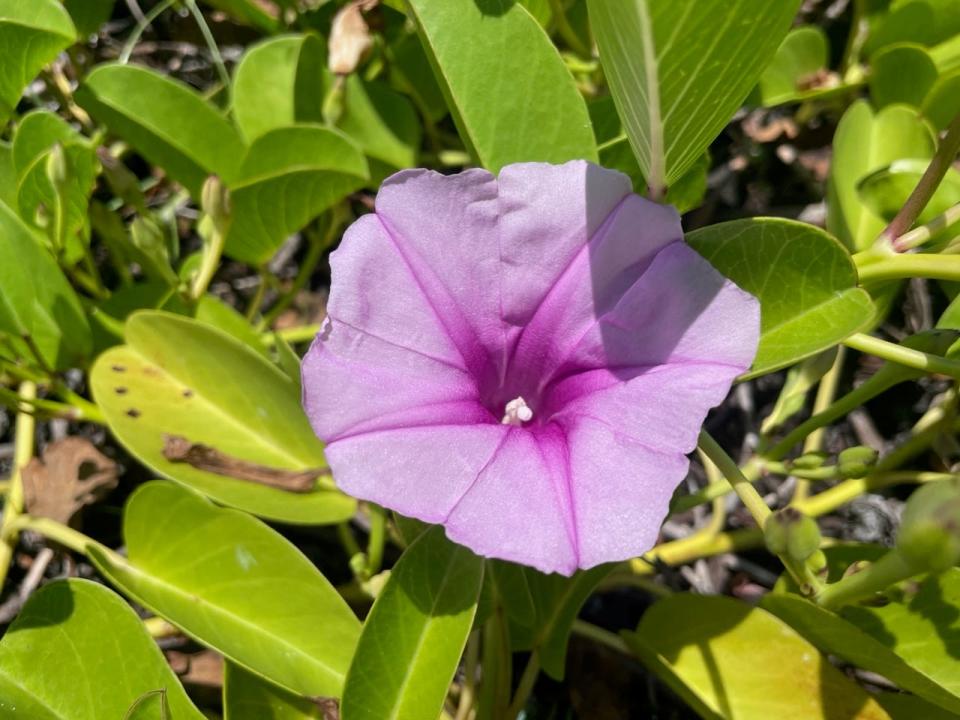
Railroad vine (Ipomoea pes-caprae) is a tough creeping perennial vine with high salt, wind and drought tolerance, surviving happily on sandy beaches, where it is valued for its erosion control. Producing lovely pink-to-purple trumpet-shaped flowers year-round, this makes a wonderful ground cover if given enough room to spread. Skipper butterflies and hummingbirds are attracted to the flowers.
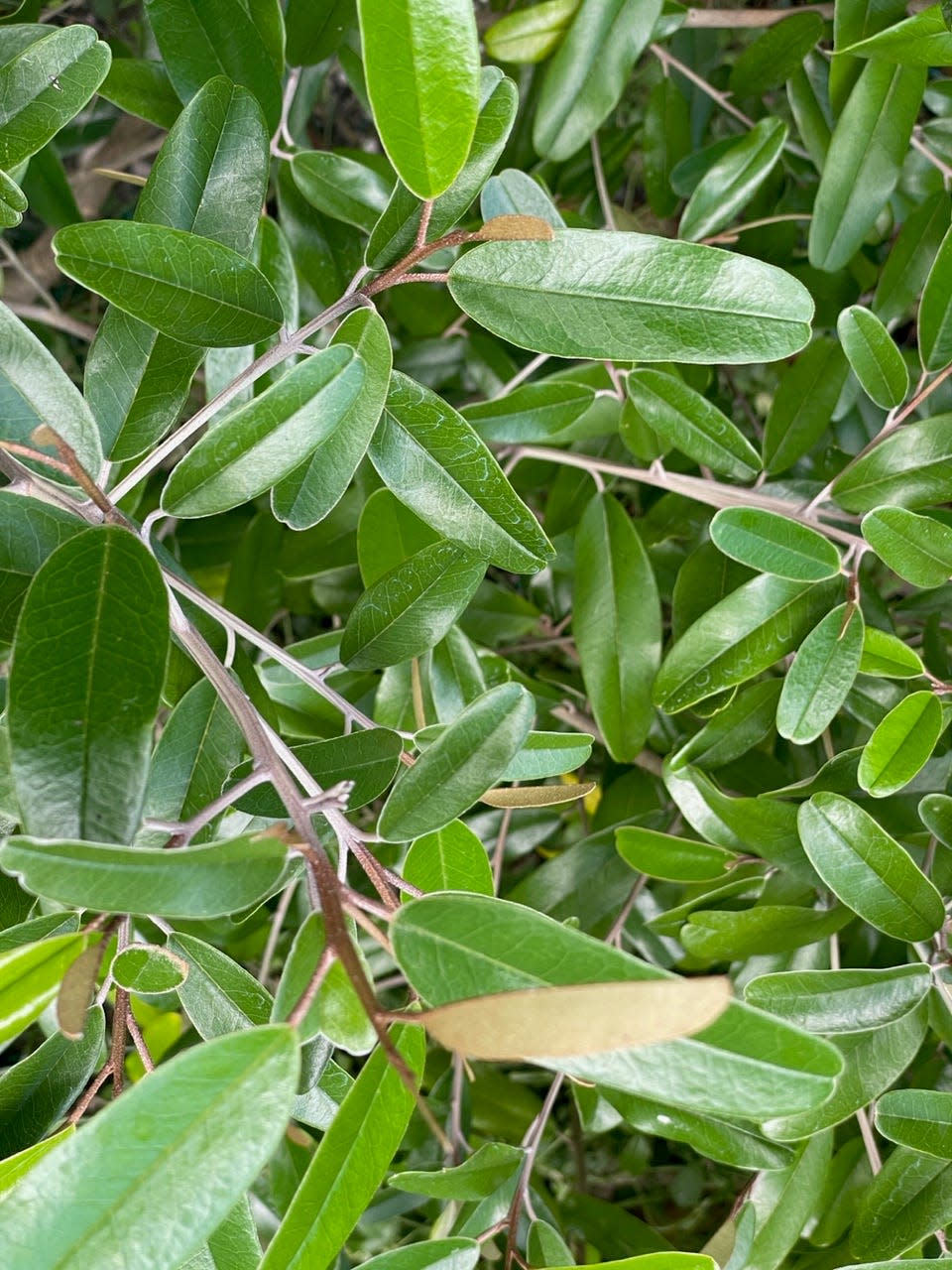
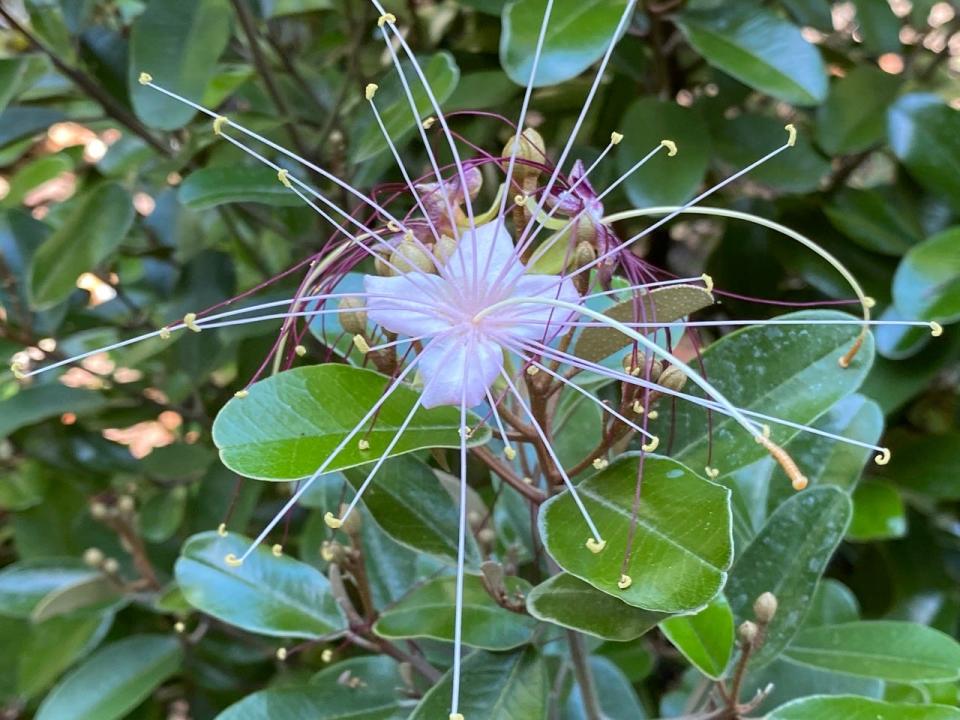
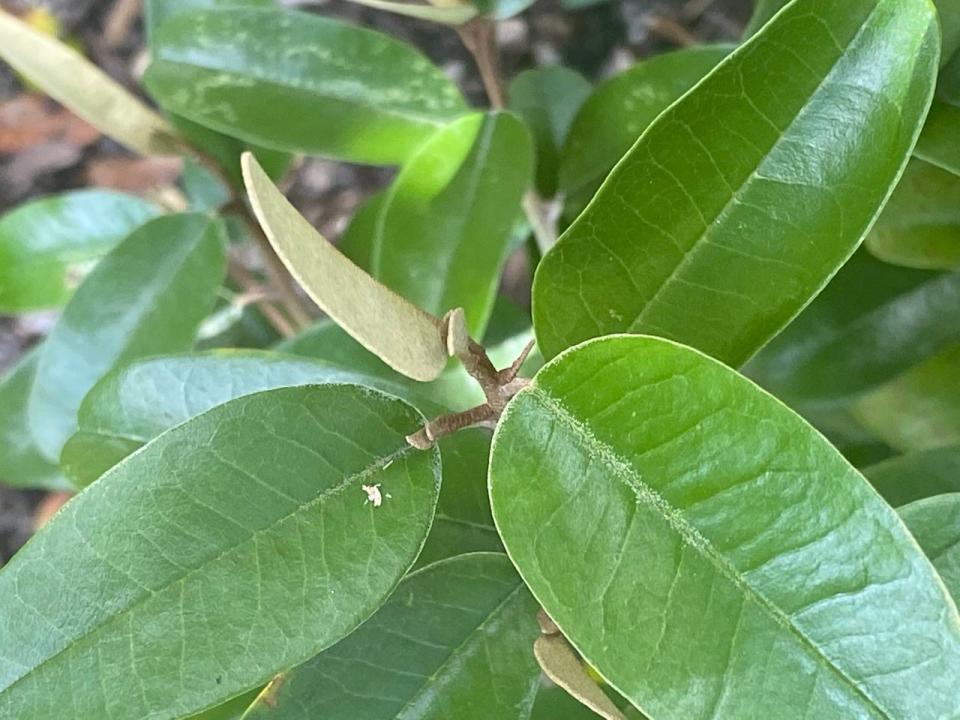
Versatile shrubs
In the shrub department, Jamaica caper, coco plum, white indigo berry, sea grape and bay cedar all are wonderfully tough and durable natives.
The lovely Jamaica caper (Capparis cynophallophora) can resist hurricane-force winds and salt spray, while remaining surprisingly drought-tolerant. Shiny light-green foliage sets off fragrant, exceptionally beautiful, starburst-like flowers, which turn white to pink in April and May. This can be grown as a specimen, accent plant or a terrific hedge, reaching an ultimate height of 12 feet. One of Florida’s most versatile plants, this deserves a spot in every garden.
White indigo berry (Randia aculeata) is a tough, slow-growing evergreen with remarkably high wind and salt spray tolerance. A gardenia relative, the small white flowers are fragrant and always on display. Profuse quantities of white berries enclose a deep blue indigo pulp loved by birds and wildlife, and often used as a dye. This provides nectar for swallowtails and other butterflies and is the larval host for the tantalus sphinx moth. White indigo berry makes an excellent specimen or border plant, thriving on harsh coastal landscapes.
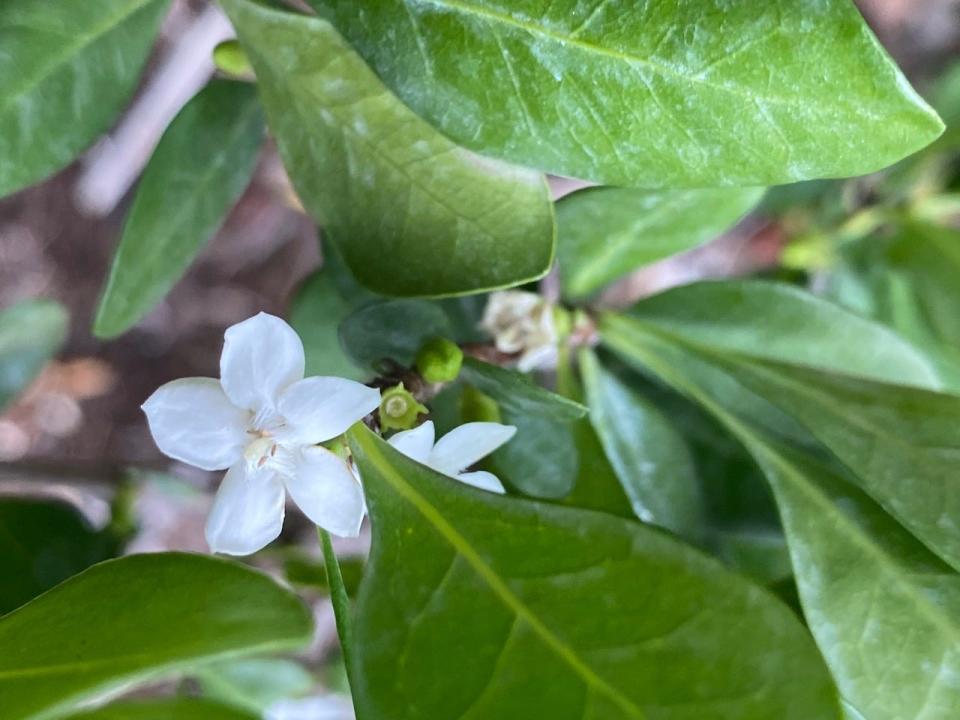
Bay cedar (Suriana maritima) is another wonderful shrub fully tolerant of drought, salt spray, hurricane-force winds and even short periods of saltwater inundation. Its multi-stemmed growth habit and adaptability to harsh environments makes it excellent for controlling beach erosion.
Lovely dense clusters of soft, gray green foliage show off the small yellow flowers that provide nectar to numerous butterflies including great southern whites, julias, Miami blues and obscure skippers. It is the larval host for the mallow and rare martial scrub hairstreak butterflies. The soft texture of the foliage makes this a wonderful accent plant.
Sea grape (Coccoloba uvifera), with its large rounded leaves and broad spreading canopy, is widely planted in South Florida but still listed as protected due to its importance in coastal dune stabilization.
Tolerating salt and harsh, windy conditions, this is a wonderful seaside tree, windbreak or hedge. Glossy bronze-red new growth is stunning, and mature foliage is distinctive with red leaf veins. A dioecious plant, the female plants produce lovely clusters of grape-like fruits that ripen to a deep purple and are enjoyed by birds and wildlife. They also make a delicious jelly.
As it is difficult to differentiate male and female trees, it is best to buy several to improve your chances of getting both sexes to insure berries.
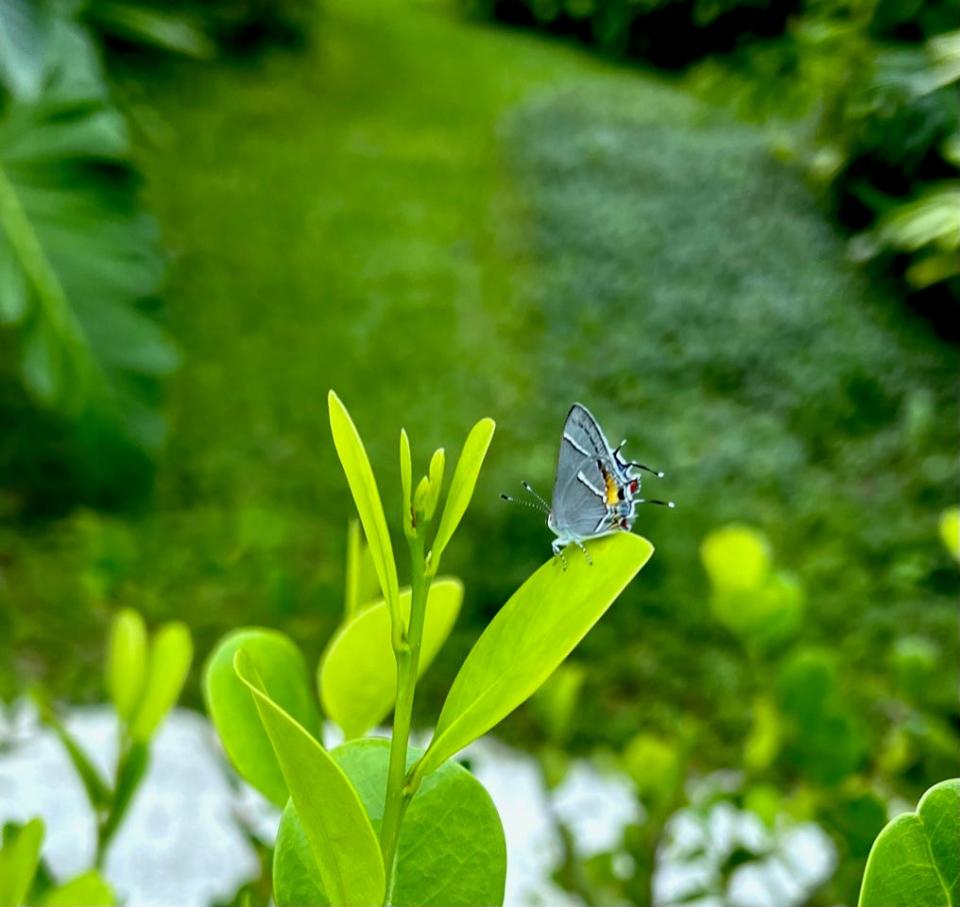
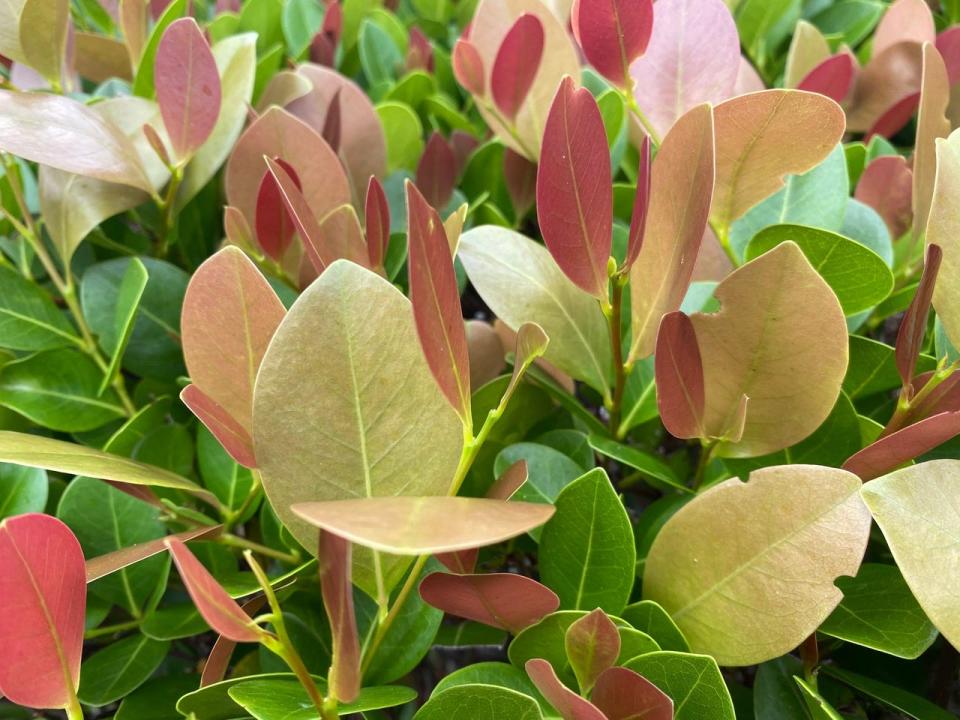
Cocoplum (Chrysobalanus iaco) is another tough, salt-tolerant native with glossy green leaves and lovely bright-red new growth. Small fragrant white flowers appear year-round and ripen to lavender purple-colored edible fruits, which are great in jelly as well as an important food source for birds and wildlife. Growing to 12 feet, this is more often seen pruned to a low- or medium-sized hedge. It also works as a specimen, accent or foundation planting, needing little care after it is established.
Tough palms
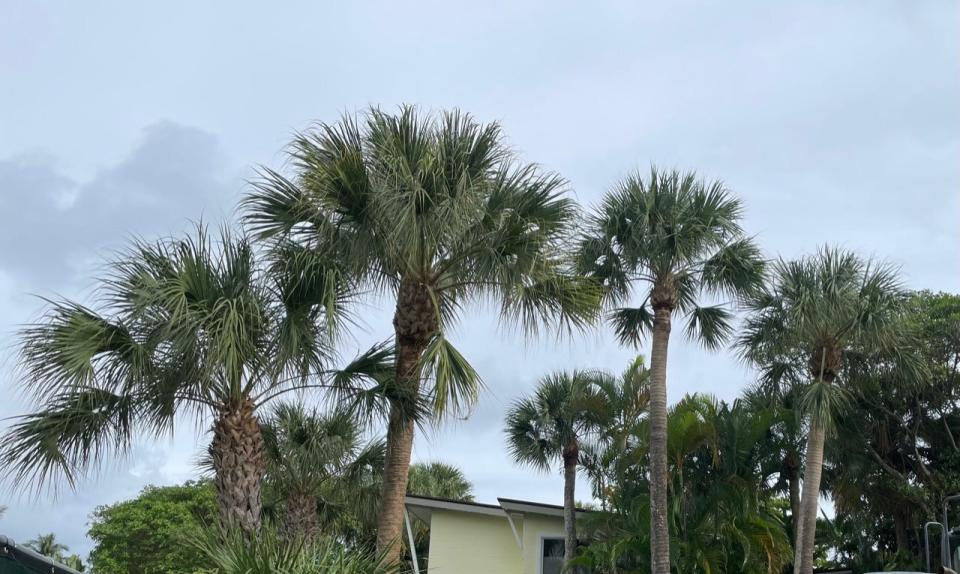
Sabal or cabbage palm (Sabal palmetto) is Florida’s state tree and one of the most wind-resistant of all the palms, regularly surviving hurricane-force blasts and tolerating brief periods of saltwater inundation. Growing 60-80 feet, this tree has a lifespan of more than 100 years.
The small, white fragrant flowers are a nectar source for butterflies and the berries are important food for birds and wildlife. The fronds provide nesting sites for birds and roosting habitat for yellow bats, whose color blends in so well they become almost invisible. Bats especially like the dead fronds hanging down below the live ones above. (For those of you who may not love bats, try to remember that they consume huge numbers of insect pests.)
Unfortunately, sabal palms are often subject to excess pruning, as removing fronds depletes the food production machinery of the plant. If you must prune, take only the hanging dead fronds; avoid at all costs what is called the “hurricane cut,” which leaves only a few fronds at the top of the tree. This is not only unsightly, but extremely damaging to the plant. “Boots” appear where the dead fronds have fallen and are excellent habitat for pollinators. Sabal palm is the larval host for the Monk skipper.
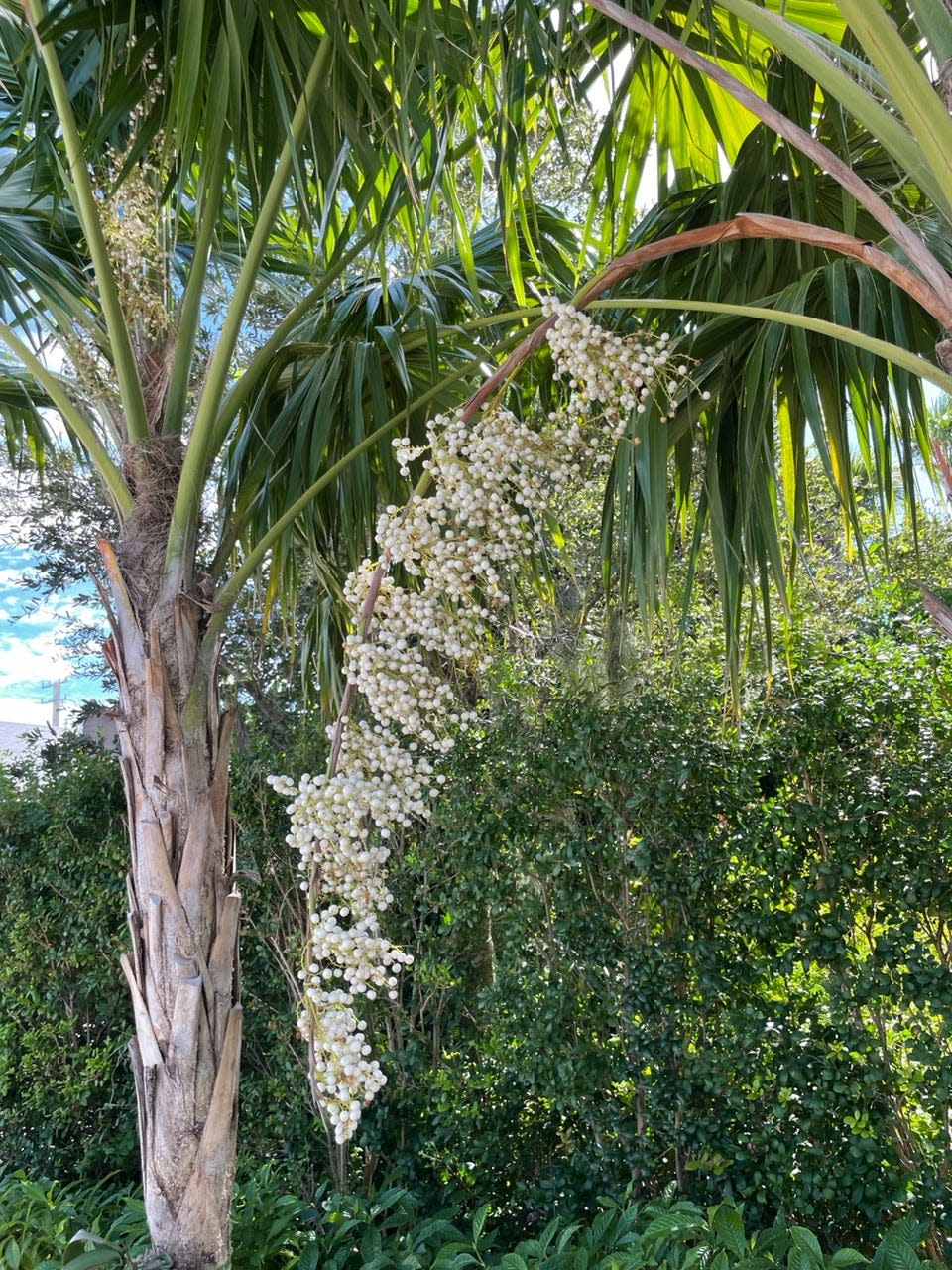
The thatch palm (Thrinax radiata) is a much smaller palm with an ultimate height of 10-15 feet. Salt- and drought-tolerant, this is another great plant for seaside locations, thriving in sandy soils with minimal nutrients. Slow-growing, this also does well in containers, where it won’t need transplanting for several years. It is happy in sun or shade.
Proper planting
A lovely baobab tree came down in Bradley Park during Ian’s heavy winds. Upon close inspection, it was clear that the tree was badly root-bound, its roots wrapping around one another laterally were unable to establish a vertical support system. Bits of plastic were still visible in the root ball, suggesting that the tree may have been placed in the ground in its original container.
This underscores the importance of proper planting for trees and shrubs; as plants have only the amount of support provided by their roots, these must be given adequate room to become properly established. Baobabs are among the longest-lived trees on earth, with some recorded ages of 2,400 years. It’s a shame to lose one due to improper planting.
Adding hurricane-resistant plants to our landscapes will mitigate the damage of major winds and rain, but nothing can really protect against a major storm surge.
Palm Beach was incredibly lucky to have avoided the brunt of Ian this year, Dorian in 2019, Irma in 2017 and countless others since the Okeechobee hurricane of 1928 whose 10-foot surge killed more than 2,500 people. As we work to create sustainable landscapes, we might consider our buildings as well, ensuring our building code is sufficiently safeguarding our properties from 21st-century storms.
To preserve our beautiful architecture, landscapes and way of life for future generations, we would be wise to implement sustainable, resilient policies now to protect our fragile barrier island.
This article originally appeared on Palm Beach Daily News: Creating sustainable landscapes in Palm Beach will serve us well

